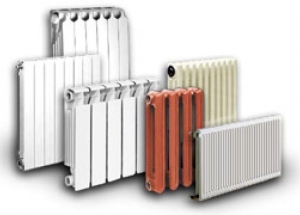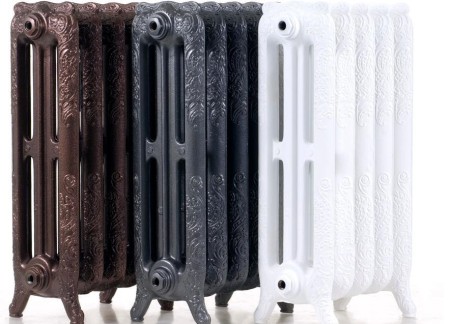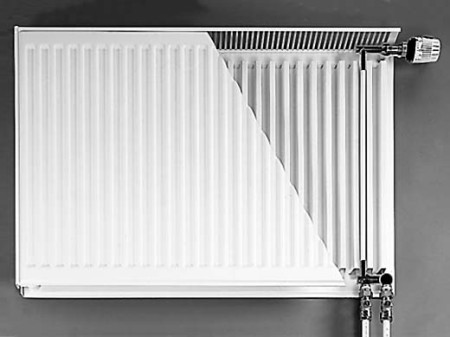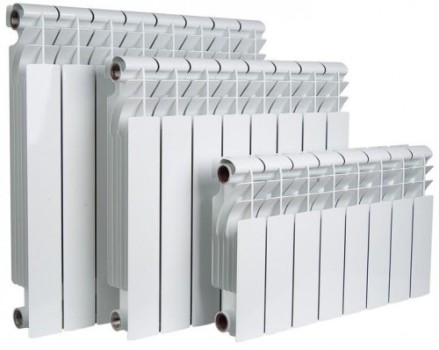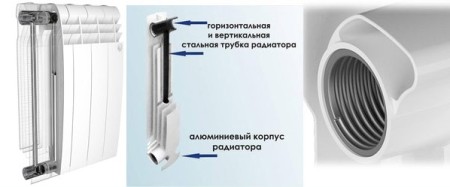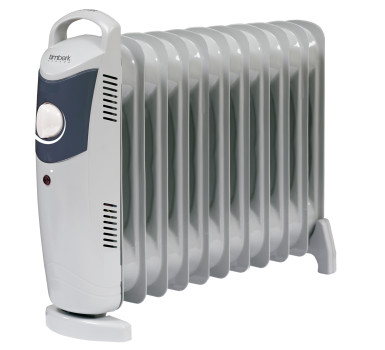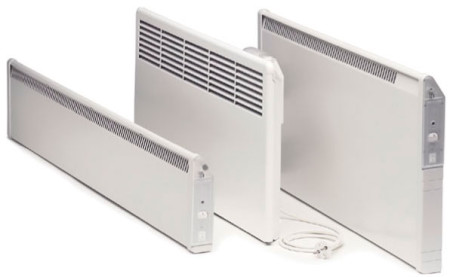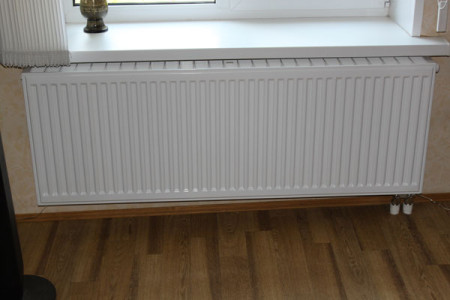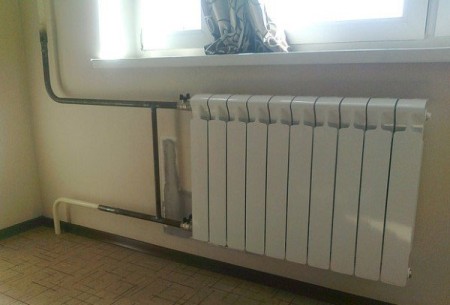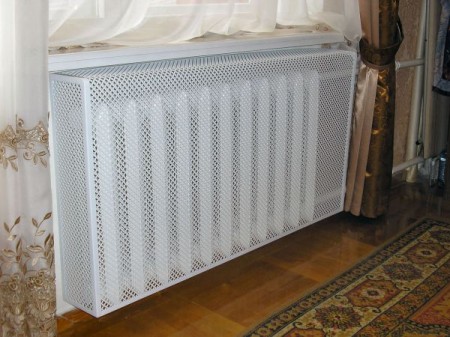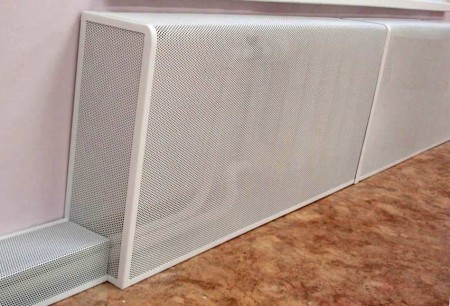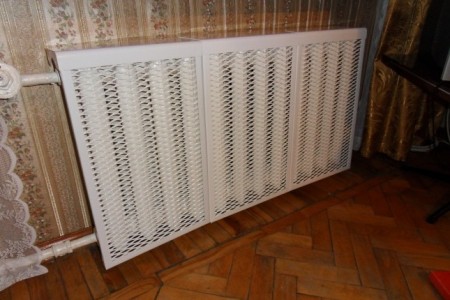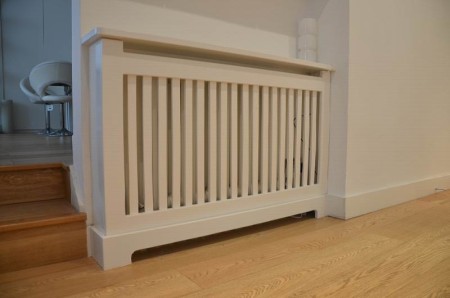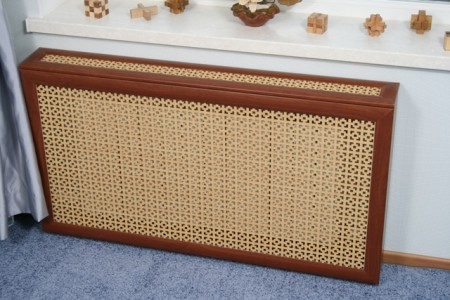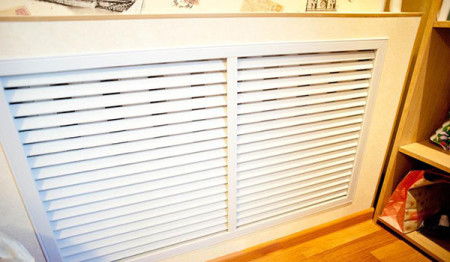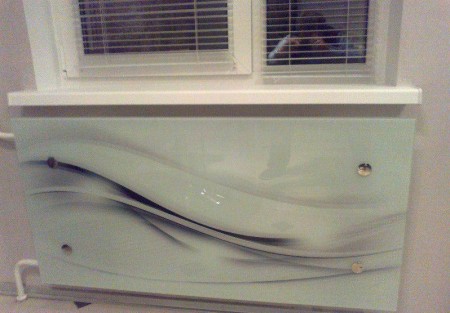Progress, as we know, is moving forward with great speed, and he did not pass over heating radiators. Today, in addition to cumbersome and heavy batteries, new models have appeared: light, beautiful, effective. But before buying and installing a radiator, you need to know exactly which characteristics to pay attention first. In our publication you will find a description of all the most common domestic radiators, as well as useful advice on selection and installation. But first, let's look at a few basic types of radiators, their differences and features.
Content
Types of radiators
All radiators are classified according to different characteristics, we will not go into technical details, and we will consider the classification only by the material of manufacture.
So, radiators for heating houses and apartments are:
• Cast-iron.
• Steel.
• Aluminum.
• Bimetallic.
• Electrical.
radiators, heating, cast iron
Of course, everyone is familiar with everything, as they were common before, and had virtually no analogues. The cast-iron battery has a small heat recovery surface, in addition, cast iron is a metal with poor thermal conductivity. Heating of the room is mainly due to thermal radiation, and only 20% of the heat output is due to convection. The thermal power of one section is small - a maximum of 160 W, the maximum working pressure is 15 atm, the maximum operating temperature of the coolant is 150 ° C.
Advantages: simple installation, work with any coolant, serve up to 35 years or more, withstand high pressure, and are relatively cheap.
Disadvantages: heavy weight, need for painting, low heat dissipation, greater inertia (they heat up for a long time and cool for a long time).
steel radiators
Compared with cast iron, they serve much less - about 25 years, but heat is much more effective. They are two welded sheets with stamped tanks for the coolant. Have a smaller cost compared to aluminum radiators. They are already sold with sublimation painting. Since the steel radiators are not sectional, but panel ones, so their power directly depends on the total volume of the radiator, and is a maximum of 5700 watts. Withstand pressure up to 10 atmospheres.
Advantages: a small depth and a large heating area - that is, this battery warms up very quickly, and does not need a lot of coolant. Steel batteries, as we have already mentioned, heat up very quickly, and also cool down quickly - this allows us to save energy resources considerably. In addition, there are steel batteries inexpensive - this is one of the most inexpensive options for installing heating in your home.
Among the shortcomings it is necessary to note the small working pressure, low resistance to corrosion and mechanical damage.
aluminum radiators
Depending on the technology of production, there are two types:
Cast - all sections of the radiator are cast as individual parts, after which the bottom is welded to them.
Extrusion - aluminum sheet is pressed through steel plates with holes of the desired cross-section and shape - as a result, a profile of the desired shape is obtained. After the workpiece has cooled, it is cut to the size of the radiator, weld the bottom and top.
It should be noted that the best aluminum heating radiators are cast. The weight of one section of a good radiator should be at least 1 kg. The depth of the section is 110 mm, the thickness of the walls is up to 3 mm. The aluminum radiator gives off heat (about half) in the form of radiation, the rest is convection. Some models of aluminum radiators are equipped with additional thin ribs placed inside the sections, due to which the heating area increases.
The thermal power of one section does not exceed 160 W, the working pressure is 16 atm. Aluminum radiators provide heat and heat up quickly. They can be used in both autonomous and centralized heating systems.
Benefits:
• Attractive appearance.
• If a damaged section is damaged, it can be replaced.
• Light weight and dimensions.
• Democratic price.
• Good heat dissipation.
Disadvantages. One of the biggest disadvantages of aluminum is that it is very sensitive to sudden pressure drops and water hammers. In addition, aluminum actively interacts with various chemical elements that can be present in the coolant, and can be actively oxidized. Which, in turn, will lead to traffic jams and damage to the radiator. Therefore, it is highly recommended to install aluminum radiators only in systems that control the chemical composition of water.
bimetal radiators
The radiators of this type successfully combine all the advantages of aluminum and steel radiators. The outer part of the bimetallic radiator is made of aluminum, the channels for the coolant are made of steel. To put it more simply, it is an aluminum radiator with steel tubes for the coolant inside. Aluminum has a better thermal conductivity than steel, which improves the performance of the radiator.
One section of the bimetallic radiator has a thermal power of 200W, the operating pressure of one section is a maximum of 35 atm. Bimetal batteries are recommended for installation in offices and apartments - places with centralized heating. Use even the best bimetal radiators for heating in private houses and cottages is inexpedient financially.
Advantages: practical, high resistance to aggressive chemicals, high working pressure, long service life - 20 years or more.
Disadvantages: the steel core somewhat lowers the heat transfer of the radiator, high cost - bimetal radiators are the most expensive in the market.
Electrical heating radiators
All electric radiators for domestic use are divided into:
• Oil coolers.
• Convectors.
oil radiator
Inside such a radiator is filled with mineral oil, which acts as a coolant. The oil is heated with a tan and gives heat to the surrounding area. The oil cooler does not burn oxygen, so the heating element is hidden inside the housing.
Advantages: mobility, fire safety, no noise during operation.
Disadvantages: large weight and dimensions, the possibility of getting a burn from the heated surface of the radiator, the room warms up unevenly.
The oil-type radiator is suitable for office, private house and villa.
electric convector
The principle of the convector is based on the air circulation due to the temperature difference - the convector heated by the air rises, cools down, falls down, and again falls into the lower grille, after which the cycle repeats. Thus, the circulating air provides a stable temperature in the room. The convector arrangement is quite simple: a metal housing, inside which there are heating elements, an automatic temperature controller and a timer. The convector does not burn or dry oxygen in the room, is not afraid of moisture, is completely safe, does not require constant monitoring (in contrast to a fan heater), is easily and simply mounted on the wall.
Radiators for home heating, which is better
For a private house it is clearly recommended to install steel panel radiators. They have a long service life, and heat transfer practically does not concede to more expensive aluminum models. There will be no problems with the airing of the system, as the steel radiators are equipped with the so-called Mayevsky cranes, through which excess air can be lowered in a few seconds.
Steel radiators are not noisy. If the owners do not like the appearance of steel radiators, then, of course, you can buy aluminum, only equipped with an automatic razvozdushivatelem. For steel radiators, it is recommended to use pure or distilled water as coolant, as well as special antifreeze.
Radiators of heating, which is better for an apartment
Unlike a private house, steel radiators are strongly discouraged from being used in central heating systems - their working pressure is low, and the central heating coolant is often contaminated with aggressive chemicals.
Given these factors, you should give preference to bimetallic radiators or, in extreme cases, aluminum, but from a good, proven manufacturer. In this case, there is not only positive feedback from buyers, but also a sufficient number of components and spare parts.
How to hide heating radiators
All kinds of decorative screens and grilles for heating radiators have long been popular with interior decoration of premises, their installation does not require any professional skills, most often a decorative screen or a grill simply hang on the radiator. It should be noted that the protective panels absolutely do not interfere with the exchange and convection of heat in the room. They are made with a straight or slightly rounded edge, while manufacturing piping is taken into account.
Below we give an example of several ways to hide the radiator and in addition to decorate the interior of the room.
hinged screen with lid
Most often, such screens make metal their installation is extremely simple - the screen is hung on the heater. All installation work will not take a few minutes. The screen does not interfere with heat transfer and convection.
flat screen radiator
the most popular and popular option. This is explained by the fact that flat screens are widely used for decoration of radiators built into niches, and also as an independent element of interior decoration of premises. The flat screen can be decorated with carving, pattern, forging elements, etc. Individual specimens are real works of art.
screen-box for radiator
This screen allows you to completely hide the often pretty scary cast-iron batteries, covered with dozens of layers of paint. In addition, very often even modern radiators do not really fit into the interior of the room.
Decorative screens and ducts for radiators by material
metal screen
Durable and practical design, especially if made of stainless steel. It looks rather aesthetically in both residential and public areas.
decorative screen of wood
Wooden products are great for decorating, because they look very nice and natural. You can buy an already finished wooden screen to order individually or make yourself - under the color of furniture and style of the room. A significant drawback of wooden screens - over time they dry up and deform from the constant exposure to high temperatures.
screen from MDF panels
The main advantage of MDF in front of a tree is that with similar characteristics this material is cheaper than wood by 50-70%.
screen made of plastic
The cheapest option, but not the best, as when heating plastic begins to release toxic substances into the environment. Plastic gratings are best installed in non-residential premises.
glass screen
Most often a glass plate is a sheet of rectangular shape, equipped with steel holders. The disadvantage of this screen is that it closes the radiator only from the front.


